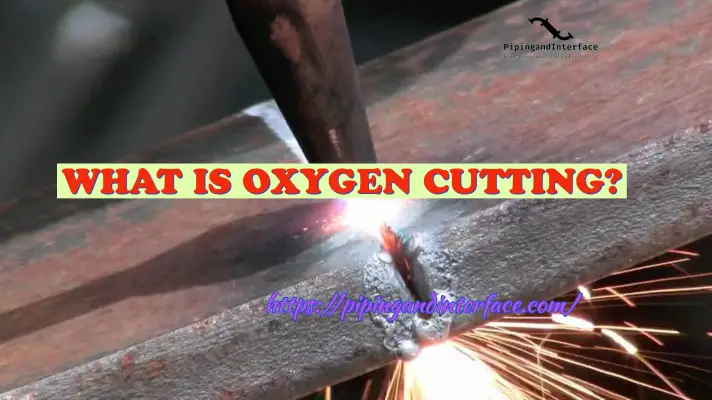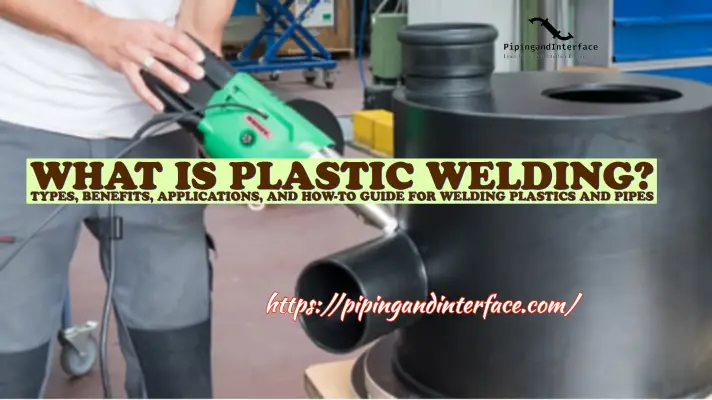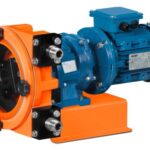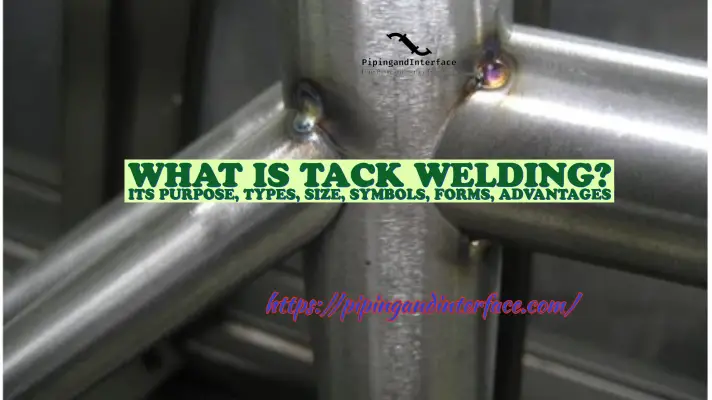Corrosion coupons are small, flat, metallic samples that are used to monitor and measure the rate of corrosion within a system or process. They are typically made from the same metal as the system being monitored and are placed within the system to be exposed to the same environment as the rest of the system.
The coupons are removed at specified intervals and analyzed to determine the extent and rate of corrosion. This information can be used to identify potential issues with the system, determine the effectiveness of corrosion inhibitors, or evaluate the performance of materials used in the system.
Corrosion coupons are widely used in a variety of industries, including oil and gas, chemical processing, water treatment, and manufacturing, to help prevent or mitigate the effects of corrosion on equipment and infrastructure.
Applications of Corrosion Coupons
Corrosion coupons are used in a wide range of applications across various industries to monitor and measure the extent and rate of corrosion in different systems. Some of the common applications of corrosion coupons include:
- Oil and Gas Industry: Corrosion coupons are extensively used in the oil and gas industry to monitor the corrosion rates in pipelines, storage tanks, and other equipment that is exposed to corrosive environments. This information helps to identify potential corrosion problems and to determine the effectiveness of corrosion inhibitors.
- Water Treatment: Corrosion coupons are also used in water treatment facilities to monitor the corrosion rates in pipes, pumps, and other equipment used in the treatment process. This helps to identify potential corrosion issues and to optimize the use of corrosion inhibitors and other protective coatings.
- Chemical Processing: Corrosion coupons are used in chemical processing plants to monitor the corrosion rates in vessels, reactors, and other equipment that is exposed to corrosive chemicals. This helps to identify potential corrosion problems and to optimize the use of corrosion-resistant materials.
- Manufacturing: Corrosion coupons are used in manufacturing facilities to monitor the corrosion rates in equipment used for metal fabrication, plating, and other processes. This helps to identify potential corrosion issues and to optimize the use of corrosion-resistant materials.
- Infrastructure: Corrosion coupons are also used in infrastructure applications such as bridges, highways, and buildings to monitor the corrosion rates in metal components. This helps to identify potential corrosion problems and to optimize the use of protective coatings and other corrosion mitigation strategies.
Overall, the use of corrosion coupons is critical for maintaining the integrity and safety of various systems and infrastructures by identifying and mitigating potential corrosion problems. Fig. 1 (Image Credit: https://www.cosasco.com/product/corrosion-coupons-ci) below shows some typical corrosion coupons.

Working of Corrosion Coupons
Corrosion coupons work by providing a sacrificial metal sample that is exposed to the same environment as the metal components within the system being monitored. The coupons are made from the same material as the system being monitored and are typically placed within the system for a specific period of time, ranging from a few days to several months.
During this time, the coupon is exposed to the same corrosive conditions as the metal components of the system. The coupon will corrode at a rate similar to that of the metal components, providing an accurate representation of the extent and rate of corrosion.
After the coupon has been exposed for a specified period, it is removed from the system and analyzed to determine the extent and rate of corrosion. This is typically done by measuring the weight loss of the coupon, as well as any changes in its surface appearance or other physical properties.
The data obtained from the analysis of the corrosion coupon can be used to determine the effectiveness of corrosion inhibitors, identify potential corrosion problems, and evaluate the performance of materials used in the system.
Overall, corrosion coupons provide a simple and cost-effective way to monitor the extent and rate of corrosion within a system, helping to identify potential issues and optimize corrosion mitigation strategies.
Types of Corrosion Coupons
There are several types of corrosion coupons that are commonly used to monitor and measure the rate of corrosion in different systems. These include:
- Flat Coupons: These are the most commonly used type of corrosion coupon and are typically flat, rectangular-shaped samples that are made from the same material as the system being monitored.
- Cylindrical Coupons: Cylindrical coupons are used to monitor the corrosion rates of pipelines and other cylindrical structures. These coupons are typically cylindrical in shape and are placed inside the pipeline.
- Rod Coupons: Rod coupons are used to monitor the corrosion rates of rods or other long, cylindrical structures. These coupons are typically long and thin, with a small diameter.
- Wire Coupons: Wire coupons are used to monitor the corrosion rates of wires or cables. These coupons are typically made from the same material as the wire or cable being monitored and are coiled or wrapped around the wire or cable.
- Ring Coupons: Ring coupons are used to monitor the corrosion rates of flanges or other circular structures. These coupons are typically circular in shape and are placed around the flange or structure being monitored.
Overall, the type of corrosion coupon used will depend on the specific application and the structure being monitored. The choice of coupon will be based on factors such as the shape of the structure, the corrosive environment, and the type of analysis required.
Selection of Corrosion Coupons
The selection process for corrosion coupons involves considering a number of factors related to the specific application and the system being monitored. These factors include:
- Material of Construction: The corrosion coupon should be made from the same material as the system being monitored to provide an accurate representation of the corrosion rates.
- Shape and Size: The shape and size of the corrosion coupon should be chosen based on the geometry of the system being monitored. The coupon should be large enough to provide a representative sample of the corrosion rates but small enough to minimize the impact on the system.
- Exposure Time: The exposure time for the corrosion coupon should be chosen based on the expected corrosion rates and the frequency of monitoring. Coupons that are exposed for too short a time may not provide an accurate representation of the corrosion rates, while coupons exposed for too long may be more susceptible to localized corrosion.
- Corrosive Environment: The choice of corrosion coupon should also take into account the corrosive environment. For example, coupons exposed to highly acidic or alkaline environments may need to be made from a different material or coated with a protective layer.
- Analysis Requirements: The type of analysis required will also influence the selection of a corrosion coupon. For example, coupons used for weight loss analysis may need to be of a specific size or shape to ensure accurate results.
Overall, the selection process for corrosion coupons is critical for ensuring accurate and meaningful data is obtained from the monitoring process. The selection of the appropriate coupon will depend on a range of factors related to the specific application and the system being monitored.
Corrosion Coupon Installation
The installation of corrosion coupons is critical for ensuring accurate monitoring and measurement of the corrosion rates within a system. The location of the coupon should be carefully selected based on several factors, including:
- Accessibility: The coupon should be placed in a location that is easily accessible for monitoring and removal.
- Representative Sampling: The coupon should be placed in a location that is representative of the corrosion rates of the entire system. This may require multiple coupons to be installed in different locations within the system.
- Corrosive Environment: The coupon should be placed in an area where the corrosive environment is representative of the entire system. This may require consideration of factors such as temperature, pH, and flow rate.
- Avoidance of Obstructions: The coupon should be placed in a location where it is not obstructed by other components or structures within the system.
- Avoidance of Flow Disturbances: The coupon should be placed in a location where the flow of the corrosive fluid is representative of the entire system. This may require consideration of factors such as turbulence and velocity.
Overall, the location of the corrosion coupon should be selected based on a thorough understanding of the system being monitored and the specific factors that may impact the corrosion rates. By carefully selecting the location of the coupon, accurate and meaningful data can be obtained from the monitoring process.
Corrosion Coupons vs Corrosion Probes: Differences
Corrosion coupons and corrosion probes are both commonly used to monitor and measure the extent and rate of corrosion within a system. However, there are several differences between the two, including:
- Design: Corrosion coupons are typically flat, rectangular-shaped samples that are placed within the system being monitored for a specific period of time. Corrosion probes, on the other hand, are typically designed to be permanently installed within the system and provide continuous monitoring of corrosion rates.
- Cost: Corrosion coupons are generally less expensive than corrosion probes, as they are only used for a short period of time before being replaced. Corrosion probes, on the other hand, require a more significant investment in terms of both hardware and software.
- Accuracy: Corrosion coupons provide an accurate representation of the extent and rate of corrosion within a system during the period in which they are installed. Corrosion probes, however, provide continuous monitoring and can provide real-time data on corrosion rates.
- Maintenance: Corrosion coupons require minimal maintenance, as they are typically removed from the system and replaced after a specific period of time. Corrosion probes, on the other hand, require regular maintenance to ensure accurate and reliable data.
Overall, the choice between corrosion coupons and corrosion probes will depend on the specific application and the monitoring requirements. Corrosion coupons are a cost-effective way to monitor corrosion rates over a short period of time, while corrosion probes provide continuous monitoring and real-time data.
Requirements for Corrosion Coupons
A corrosion coupon may be needed in a variety of situations to monitor and measure the extent and rate of corrosion within a system. Some common situations where a corrosion coupon may be required include:
- New System Start-Up: When a new system is installed or commissioned, corrosion coupons may be used to monitor the corrosion rates and ensure that the system is operating as expected.
- Maintenance or Shutdown: During maintenance or shutdowns, corrosion coupons may be installed to monitor the corrosion rates and identify any potential issues or areas of concern.
- Process Changes: If there are any changes to the process or operating conditions, corrosion coupons may be installed to monitor the impact on corrosion rates and identify any potential issues.
- Corrosion Rate Analysis: Corrosion coupons may be used to provide accurate and reliable data for the analysis of corrosion rates over a specific period of time.
- Compliance Requirements: In some cases, regulatory or compliance requirements may specify the use of corrosion coupons to monitor and measure the extent and rate of corrosion within a system.
Overall, the decision to use a corrosion coupon will depend on the specific application and the monitoring requirements. By using corrosion coupons, accurate and reliable data can be obtained to help identify and mitigate potential corrosion-related issues within a system.






